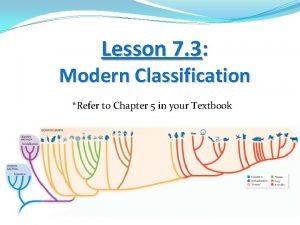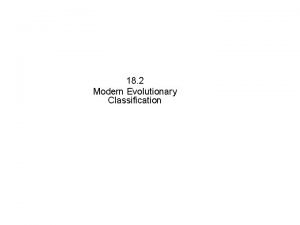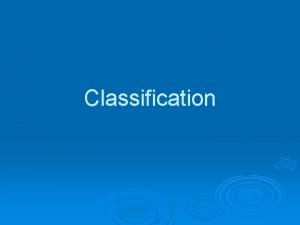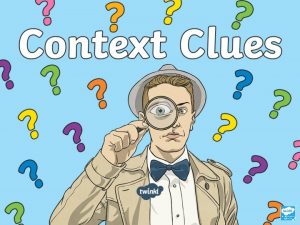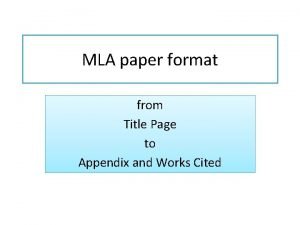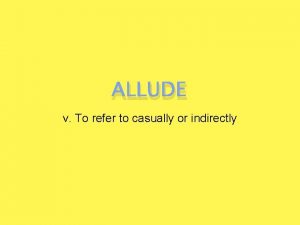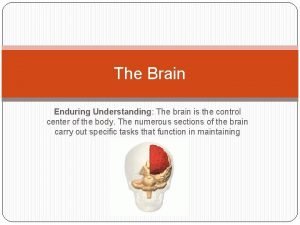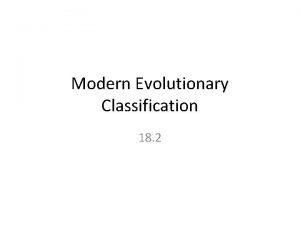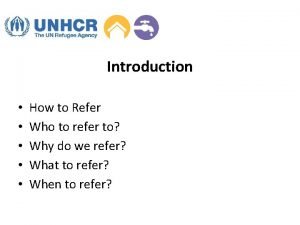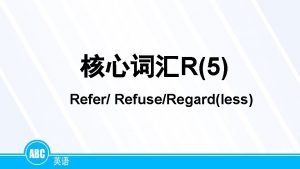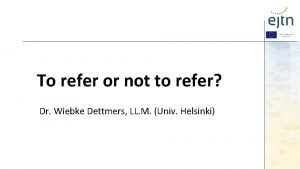Lesson 7 3 Modern Classification Refer to Chapter










- Slides: 10

Lesson 7. 3: Modern Classification *Refer to Chapter 5 in your Textbook

Learning Goals: 1. I can compare and contrast traditional and modern classification methods. 2. I can explain how different organisms are related by using a cladogram. 3. I can read and construct a cladogram.

*Read, DNC Problems With Traditional Classification For example, adult barnacles and limpets live attached to rocks and have similar looking shells. Adult crabs don’t look anything like barnacles and limpets. • Based on these features, one would likely classify limpets and barnacles together and crabs in a different group. However, this would be wrong. • Modern classification schemes look beyond overall similarities and group organisms based on evolutionary relationships. •

Modern Classification: A clade is a group of species that have a single common ancestor (same branch!) Cladogram: a visual organization linking organisms by their common ancestors

Traditional VS Modern Classification: BOTH systems are still used today: Traditional is used to name organisms and group them based on similar traits Uses a dichotomous key to sort traits Modern is used to determine evolutionary relationships and who you are most closely related to Uses a cladogram to sort clades

Building a Cladogram: • Cladograms begin with a common ancestor • Each splitting event or branch is called a node • Each node represents a derived character, a trait that developed in the common ancestor and was passed to all offspring

Building a Cladogram: Derived characters go at the bottom of the cladogram Clades/Organisms go at the top of each branch If the derived character comes before the clade/organism, they have evolved that trait If the derived character comes after the clade/organism, they did NOT evolve that trait

Building a Cladogram: A cladogram’s branching patterns indicates how closely related you are to the clade/organism next to you (Ex. Organism 4 is most closely related to organism 3) The Tree of Life is actually a large cladogram of how we are all related!

Cladogram Example:

Cladogram Example:
 Traditional classification vs modern classification
Traditional classification vs modern classification 19.2 modern evolutionary classification
19.2 modern evolutionary classification Chapter 17 section 2 modern classification answer key
Chapter 17 section 2 modern classification answer key An overall state of well-being or total health
An overall state of well-being or total health Mean
Mean Example of flush left headline
Example of flush left headline Refer and monitor
Refer and monitor To refer to casually or indirectly
To refer to casually or indirectly Cost benefit analysis quiz
Cost benefit analysis quiz The left
The left A cluster of skills refer to
A cluster of skills refer to
